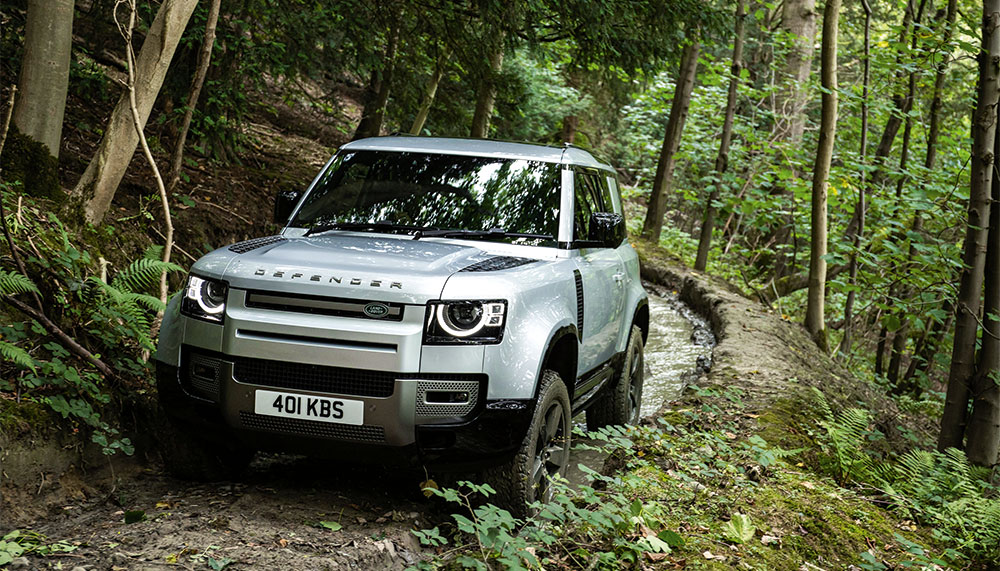The short wheelbase, three-door Land Rover 90 is a sporty addition to the Defender family.
Story Bruce McMahon
Almost 75 years on from the first version of the British off-roader and workhorse, Land Rover’s 21st century Defenders are a compelling amalgam of capability and comfort, thanks to old-school know-how and a swag of electronics. Today’s Defenders may be more expensive propositions, and less likely to become paddock-bashers, yet they have further enhanced Land Rover’s reputation for go-anywhere, all-weather machines.
First of the current Defender family to arrive was the 110 – a full-sized, five-door family wagon with good road manners and excellent bush and beach abilities. A grand tourer, it would be the machine for a long drive down indifferent roads, although budgets could be stretched past an entry level $82,000 vehicle if tempted by a range of options and power plants.
The 110 has now been joined by the three-door Land Rover Defender 90. Dropping a couple of doors and shortening the body may not save much cash, but this smaller version brings more sporting character – and attitude. It’s more like a back roads rally machine.
The 90’s list price, before on-road costs, begins around $81,000. Step up to the twin-turbocharged, 3L diesel Defender 90 S D250 and add another $10,000. The D250’s mild hybrid diesel powerplant, where an electric motor helps torque at low speeds, pushes out 183kW of power and 570Nm of torque from a low 1250rpm. This allows the 90 to jump from 0 to 100km/h in eight seconds – not shabby for a high-riding vehicle weighing around 2.3 tonnes.
The quiet but sporting engine spins enthusiastically to 4000rpm as eight-speed automatic transmission slips through its changes, delivering torque to all four wheels. Spirited performance, all-wheel-drive surety, steering responses and less bulk – plus optional air suspension on the test machine – combine for an encouraging machine down forestry tracks. Fuel consumption is about 9L per 100km.
The Land Rover’s on-road credentials are backed by off-road ability. Two-speed transfer case and a terrain response system allied to the Defender’s excellent low-speed torque, ground clearance of up to 290mm with air suspension, plus more compact body with excellent approach and departure angles, mean this is a very capable machine straight from the showroom.
Thrown into a tight turn, there’s some body roll, yet that doesn’t trouble the Brit’s well-bred handling. Perhaps the 110’s 535mm longer wheelbase makes for a tad more ride comfort toward the back of the vehicle, but the 90 is more agile and easier to use in tight spots.
Up front, the Defender 90 is a comfortable mix of good ergonomics, clear instrumentation and handsome dashboard that manages to convey some old-time feel. The stubby gear lever is close at hand, although shifting from reverse to drive or back may take a day before it becomes intuitive. Rear vision is limited by the spare wheel on the tailgate.
It’s a machine best suited to a couple or the go-it-alone explorer. Access to rear seats, with front seats slid forward, is best suited to younger folk. There is decent room for adults back there, though, with reasonable cargo space beyond that.
Standard gear, aside from electronic driver and traction aids, includes 25cm touchscreen, digital radio, Apple CarPlay and Android Auto, two-zone air-conditioning, power-fold door mirrors and side-hinged, assisted tailgate.
The test Land Rover 90 S D250 arrived in distinctive green body work, with a few options adding some welcome touches. Therefore, its price came to $108,388. Some might trim that, but the no-cost option 18-inch white wheels would be a keeper, as would the $2,171 white contrast roof air suspension pack for $1,309, the $2,210 capability plus pack (with extra electronic traction controls) and the $810 torque vectoring. You could probably leave out the $455 cabin air ioniser, $195 air sensor, $1,853 front jump seat and folding fabric roof at $4,810 (though it adds to the sporting flavour).
One essential, for sure, would be heavy-duty rubber mats for $388, because a Land Rover 90 would definitely aid some outings into the wilds.
This story excerpt is from Issue #143
Outback Magazine: June/July 2022










